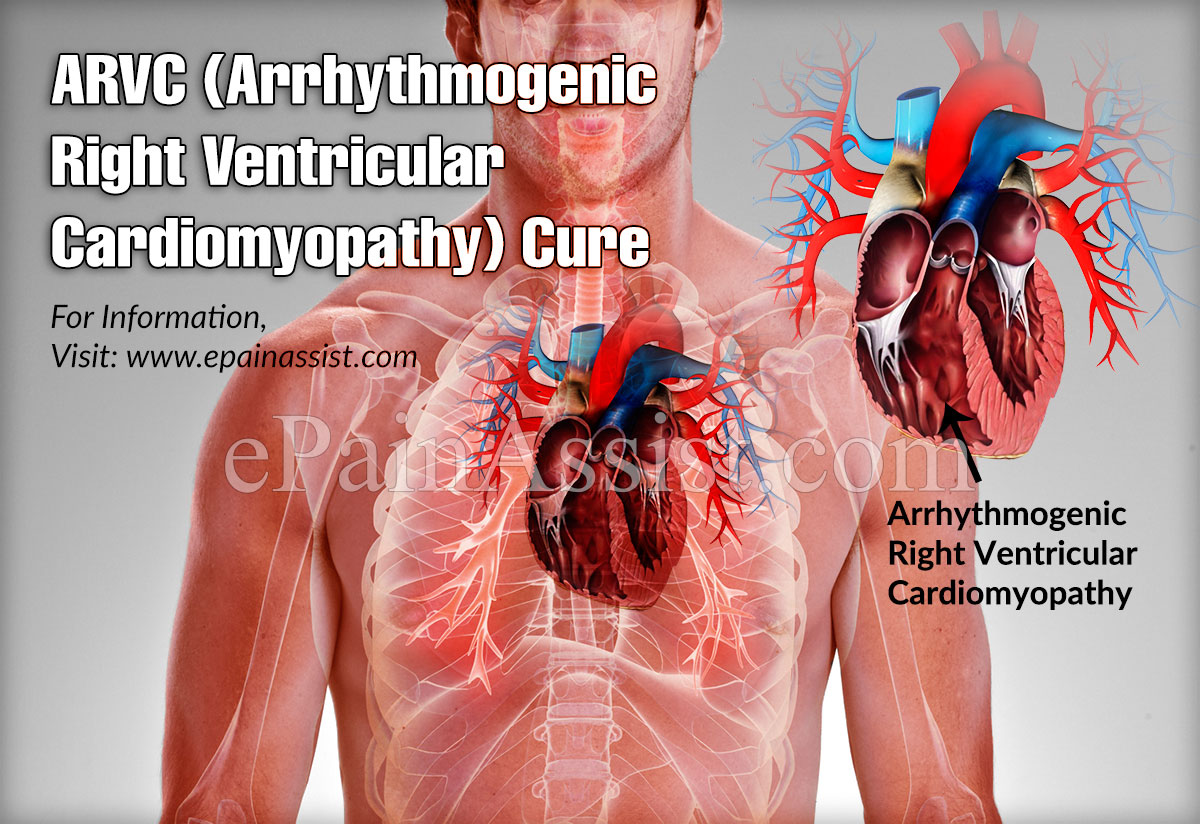ARVC (Arrhythmogenic Right Ventricular Cardiomyopathy) Cure
ARVC or arrhythmogenic right ventricular cardiomyopathy affects the functionality of the heart by causing a decrease in the production of the proteins that are responsible for holding the cells within the heart muscle. It is a rare disease of cardiomyopathy and occurs mostly as an inherited condition. It means the disease passes down in the family chain. The condition occurs due to mutation of one or more genes. The chances that an individual develops ARVC as inheritance varies and one may form the mutation, but not the condition.

How ARVC or Arrhythmogenic Right Ventricular Cardiomyopathy Affects The Heart?
ARVC or Arrhythmogenic right ventricular cardiomyopathy is a condition where there is a reduced production of the protein that holds the cells in the heart muscle. As the cells remain detached, the chances for the accumulation of fatty deposits are high. These fatty substances accumulate to repair the damage. ARVC affects the right ventricle. However, it can also affect the left ventricle or both. The physical change to the heart muscle makes the walls of the ventricles stretched and thin. Because of this scenario, the heart functions harder to pump blood required for the body.
The prolonged condition causes weakness and produces abnormal heart rhythms. The occurrence of such a state requires many years, as the disease itself is progressive. Therefore, it becomes difficult to diagnose the condition in its nascent stage.
Symptoms of ARVC or Arrhythmogenic Right Ventricular Cardiomyopathy
Arrhythmogenic right ventricular cardiomyopathy occurs in four phases. It is not essential for an individual to develop the symptoms of all the four phases. The severity of the symptoms also changes from one person to another. There are also cases where the condition may not become severe even if a person develops the condition.
Phase I – Concealed phase: In this phase, there are small changes to the right ventricle.
Phase II – Overt phase: In this phase, one can diagnose noticeable changes in the heart muscle. The changes affect the pumping action of the heart.
Phase III – Weakening of the right ventricle: In this phase, the right ventricle becomes weak and attacks the pumping operation of the heart.
Phase IV – Weakening of the left ventricle: In this phase, the left ventricle also becomes weak. The pumping action becomes weak in both the ventricles.
In addition to these, one can also experience the following symptoms:
- Fatigue
- Lightheadedness
- Increased palpitations
- Fainting
- Breathlessness
- Abnormal heartbeats
- Swelling of the ankles and feet
- Swelling of the abdomen due to fluid retention
- Increased risk of sudden cardiac arrest
Diagnosis of ARVC or Arrhythmogenic Right Ventricular Cardiomyopathy
Diagnosing is an essential factor in determining the treatment. However, it is difficult to diagnose the condition because of the progressive nature. It changes the structure of the heart muscles very often and can also build up a patchy pattern. The symptoms described may or may not be that of the condition, as they can occur due to different diseases, which makes it difficult to pinpoint the disease.
It is common for the doctor to suspect the presence of the arrhythmogenic right ventricular cardiomyopathy based on the symptoms described by the individual. An individual can also attend tests because someone in the family has ARVC or arrhythmogenic right ventricular cardiomyopathy. Confirming the presence is possible with the help of ECG, stress test, echocardiogram and MRI.
Curing ARVC or Arrhythmogenic Right Ventricular Cardiomyopathy
Arrhythmogenic right ventricular cardiomyopathy does not possess any cure. However, it is possible to control the symptoms experienced by the individual by treating the underlying condition/conditions that are elevating the situation. Also, the doctor suggests lifestyle changes and diet change improve the pumping action and prevent arrhythmias and sudden death due to cardiac arrest.
Conclusion
Diagnosing the condition of ARVC or arrhythmogenic right ventricular cardiomyopathy is a difficult task. However, providing treatment to the symptoms experienced and attending to any underlying condition will be helpful in preventing arrhythmias and improve the pumping action of the heart.
Also Read:
- Cardiomyopathy – Causes, Symptoms, Diagnosis, Treatment
- Restrictive Cardiomyopathy: Causes, Symptoms, Treatment
- Causes of Hypertrophic Cardiomyopathy & Its Treatment
- What is the life expectancy of someone with hypertrophic cardiomyopathy
- How Long Does A Person live After Being Diagnosed With Cardiomyopathy?
- How Do You Fix Cardiomyopathy?
- How Can You Detect Hypertrophic Cardiomyopathy?
- Can Exercise Help Cardiomyopathy?
